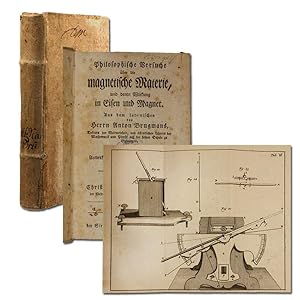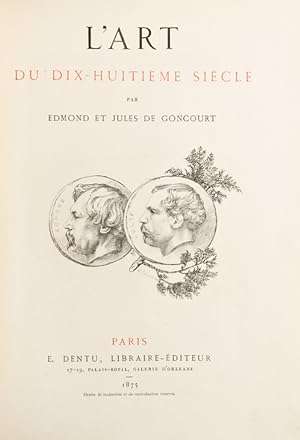gift und eisen, Gebraucht (31 Ergebnisse)
FeedbackSuchfilter
Produktart
- Alle Product Types
- Bücher (31)
- Magazine & Zeitschriften (Keine weiteren Ergebnisse entsprechen dieser Verfeinerung)
- Comics (Keine weiteren Ergebnisse entsprechen dieser Verfeinerung)
- Noten (Keine weiteren Ergebnisse entsprechen dieser Verfeinerung)
- Kunst, Grafik & Poster (Keine weiteren Ergebnisse entsprechen dieser Verfeinerung)
- Fotografien (Keine weiteren Ergebnisse entsprechen dieser Verfeinerung)
- Karten (Keine weiteren Ergebnisse entsprechen dieser Verfeinerung)
- Manuskripte & Papierantiquitäten (Keine weiteren Ergebnisse entsprechen dieser Verfeinerung)
Zustand Mehr dazu
Einband
Weitere Eigenschaften
Sprache (3)
Gratisversand
Land des Verkäufers
Verkäuferbewertung
-
Der Eisenhändler (gegr. in Bunzlau 1894). 23. Januar 1937. Nummer 4, 44. Jahrgang. Das Fachblatt der Qualität - Das Einkaufsblatt des Händlers - Für den Handel von Eisen, Stahl, Elektrowaren, Werkzeugen, Baubeschlägen, Haus- und Küchengeräten. Ohne die Beilage 'Der junge Eisenhändler.' --- Aus dem Inhalt: Verantwortliches, vorbildliches Führertum / Franz von Caucig: "Eiserne" Emanzipation der Türkei / Harry Fest-Thomas: Der Eisenhändler hilft bei der Umstellung auf neue Werkstoffe / Fach-Neuheiten / M. Grellert: Was kann der Küchenherd? / Zur amerika-Reise der Fachgruppe 7 und des VDE / Kohlenoxyd, das unsichtbare Gift / Marktberichte.
Verlag: Otto Hoffmanns Verlag, Berlin 1937., 1937
Anbieter: Antiquariat Carl Wegner, Berlin, B, Deutschland
Verbandsmitglied: GIAQ
Erstausgabe
EUR 15,00
Währung umrechnenKostenlos für den Versand innerhalb von/der DeutschlandAnzahl: 1 verfügbar
In den WarenkorbHardcover. 30,5 x 23 cm. Rotbraunes Originalheft mit kleinen Fleckchen und einer Notiz auf dem Titelblatt. Seiten 1-28 ohne Seite 25/26. Mit vielen Fachartikeln, Abbildungen und branchenüblichen Anzeigen und Stellenanzeigen. Der Umschlag mit Gebrauchsspuren. Insgesamt noch guter Zustand. -- Bitte Portokosten außerhalb EU erfragen! / Please ask for postage costs outside EU! / S ' il vous plait demander des frais de port en dehors de l ' UE! // Bitte beachten Sie auch unsere Fotos! / Please also note our photos! / Veuillez noter nos photos -- Genießen Sie ein gutes Buch auf einer Sommerwiese oder im kühlen Schatten bei einem erfrischenden Getränk. K03999-308637.
-
Positive Thoughts: Living Your Life to the Fullest (Quote-a-Page Gift Books)
Anbieter: WorldofBooks, Goring-By-Sea, WS, Vereinigtes Königreich
EUR 1,63
Währung umrechnenEUR 4,02 für den Versand von Vereinigtes Königreich nach DeutschlandAnzahl: 1 verfügbar
In den WarenkorbPaperback. Zustand: Very Good. The book has been read, but is in excellent condition. Pages are intact and not marred by notes or highlighting. The spine remains undamaged.
-
EUR 5,80
Währung umrechnenEUR 0,98 für den Versand von USA nach DeutschlandAnzahl: 1 verfügbar
In den WarenkorbHardcover. Zustand: Very Good. No Jacket. May have limited writing in cover pages. Pages are unmarked. ~ ThriftBooks: Read More, Spend Less 0.15.
-
EUR 5,81
Währung umrechnenEUR 0,98 für den Versand von USA nach DeutschlandAnzahl: 1 verfügbar
In den WarenkorbHardcover. Zustand: Fair. No Jacket. Readable copy. Pages may have considerable notes/highlighting. ~ ThriftBooks: Read More, Spend Less 0.15.
-
Mothers: A Tribute (Andrews and McMeel Gift Books)
Verlag: Andrews McMeel Publishing, 1992
ISBN 10: 0836230086 ISBN 13: 9780836230086
Sprache: Englisch
Anbieter: ThriftBooks-Dallas, Dallas, TX, USA
EUR 6,27
Währung umrechnenEUR 0,65 für den Versand von USA nach DeutschlandAnzahl: 1 verfügbar
In den WarenkorbHardcover. Zustand: As New. No Jacket. Pages are clean and are not marred by notes or folds of any kind. ~ ThriftBooks: Read More, Spend Less 0.1.
-
EUR 6,05
Währung umrechnenEUR 0,91 für den Versand von USA nach DeutschlandAnzahl: 1 verfügbar
In den WarenkorbHardcover. Zustand: Very Good. No Jacket. May have limited writing in cover pages. Pages are unmarked. ~ ThriftBooks: Read More, Spend Less 0.14.
-
The Wedding Book: A Bride's Momento (Andrews and McMeel Gift Books)
Verlag: Ariel Book / Andrews and McMeel, 1992
ISBN 10: 0836230116 ISBN 13: 9780836230116
Sprache: Englisch
Anbieter: ThriftBooks-Phoenix, Phoenix, AZ, USA
EUR 8,87
Währung umrechnenEUR 0,98 für den Versand von USA nach DeutschlandAnzahl: 1 verfügbar
In den WarenkorbHardcover. Zustand: Good. No Jacket. Pages can have notes/highlighting. Spine may show signs of wear. ~ ThriftBooks: Read More, Spend Less 0.15.
-
Allgemeine und spezielle Pharmakologie und Toxikologie Für Studenten der Medizin, Veterinärmedizin, Pharmazie, Chemie, Biologie sowie Ärzte und Apotheker
Verlag: Mannheim, Wien, Zürich: Bibliographisches Institut,, 1977
Sprache: Deutsch
Anbieter: Andrea Ardelt, Großräschen, Deutschland
EUR 12,90
Währung umrechnenEUR 3,00 für den Versand innerhalb von/der DeutschlandAnzahl: 1 verfügbar
In den Warenkorb, 27 cm, Leinen. Zustand: Befriedigend. 282 Seiten , Namensstempel, guter Zustand, (Bild von der ersten Seite) Aus dem Inhalt: Allgemeine Pharmakologie; Autonomes Nervensystem; Plasmaersatzmittel; Histamin, 5-Hydroxytryptamin, Kinine, SRS-A; Prostaglandine; Herz; Niere; Elektrolyte; Blutgerinnung; Gastrointestinaltrakt; Stoffwechselkrankheiten; Eisen; Hormone; Vitamine; Spurenelemente; Narkotika; Lokalanästhetika; Schlaf- und Beruhigungsmittel; Antiepileptika; Analeptika; Antiparkinsonmittel; Analgetika; Psychopharmaka; Pharmaka im Alter; Röntgenkonstrastmittel; Antibiotika; Chemotherapeutika; Tumoren; wichtige Gifte und Vergiftungen. Beschreibung vom Antiquariat Ardelt 1a4b Antiquariat Ardelt Sprache: Deutsch Gewicht in Gramm: 1500 2., überarbeitete und erweiterte Auflage.
-
EUR 12,23
Währung umrechnenEUR 9,44 für den Versand von USA nach DeutschlandAnzahl: 1 verfügbar
In den WarenkorbZustand: Good. Used book that is in clean, average condition without any missing pages.
-
8/1973 Baukunst und Werkform in Stuttgart, Fertigteilbau in Dänemark
Verlag: deutsche verlagsanstalt, bund deutscher baumeister, architekten
Anbieter: Antiquariat Artemis Lorenz & Lorenz GbR, Leipzig, Deutschland
EUR 9,60
Währung umrechnenEUR 3,40 für den Versand innerhalb von/der DeutschlandAnzahl: 1 verfügbar
In den WarenkorbZustand: Gut. 807 Inhaltsverzeichnis 912 Impressum 845, 887 Summaries by Eric Watson db-kaleidoskop Schlagzeilen vom Bau 808 Heiße Eisen kaltgestellt/tt 809 Gift im Lack/fla 810 Briefe XXIX XXXII db NRW-Zeitung Junge Stuttgarter Architekten 845 Baukunst und Werkform 850 Stadtentwicklungsplanung in Zambia/E. R. 852 Bestandteile einer Architektur/H.M.A. 853 Skulpturen/Ch.F. 854 Entscheidungsvorbereitung und Bauplanung/BEB 856 3 h-design/H.H.H. Stadtfunktionen 858 Wandelbare Überdachungen/AIC 860 Stadtentwicklungsplan Stuttgart/R.K. 862 Styrokube/R.H. Seltene Objekte 863 Gegebene und gemachte Welt/H.K. 864 Schulentwicklungsplanung/GUS 866 Architektur und Kunst/I.D. Gibt es demokratische Kunst? 867 Wohin mit unseren Reiterstand- bildern/M.Sch. 868 Überdachungen/G.M. 870 Holz- und Kunststoffelemente/H.W. 872 Do-Bausystem/J.C.V./A.S. 874 RW-Bausystem/W.P. Inneneinrichtungen Skandinavische Möbelmesse 875 Möbel und Inneneinrichtung/Hage db-baupraxis Spektrum 42 812 Industrieanlagen Bauen in Dänemark 882 Industrialisierter Montage- und Fertigteilbau/Solholm Badehalle 888 Bauschaden des Monats August 1973/Probst Imprägniertechnik 890 Mehr Schutz für Baustoffe/Grunau 895 Wettbewerbe 896 Chronik 899 Industrie-Informationen gutes Exemplar, ordentlich Gern können sie Ihr Buch per Rechnung bestellen. Hardcover.
-
EUR 5,33
Währung umrechnenEUR 21,59 für den Versand von USA nach DeutschlandAnzahl: 1 verfügbar
In den WarenkorbZustand: Very Good. Audubon, John James (illustrator). Very Good condition. Good dust jacket. A copy that may have a few cosmetic defects. May also contain light spine creasing or a few markings such as an owner's name, short gifter's inscription or light stamp.
-
Unknown California Classic and Contemporary writing on California Culture, Society, History, and Politics
Anbieter: Les Livres des Limbes, Chisseaux, Frankreich
Erstausgabe
EUR 20,00
Währung umrechnenEUR 18,00 für den Versand von Frankreich nach DeutschlandAnzahl: 1 verfügbar
In den WarenkorbSoft cover. Zustand: Good. 1st Edition. Stress cracks on spine, gift inscription, creased and scuffed covers. 404 pages. Book.
-
Conservative Judaism, Vol. 56, Special Supplement. The Problem of Judaism in America, in commemoration of the 350th Anniversary of Jewish Settlement in North America.
Verlag: Rabbinical Assembly of America, New York, 2004
Anbieter: Henry Hollander, Bookseller, Los Angeles, CA, USA
EUR 8,90
Währung umrechnenEUR 34,50 für den Versand von USA nach DeutschlandAnzahl: 1 verfügbar
In den WarenkorbSoftbound. Zustand: Very Good. Octavo, mildly worn paper covers, 79 pp. Articles are "The Problem of Judaism in America (1907)," Israel Friedlander, introduced by Baila Round Shargel, The Problem of Judaism in America (2004), "The Problem is Still Very Much With Us," Arnold Eisen, "Is the 'Dawn of the Jews the Dusk of Judaism'?" "Report from the Periphery," Lawrence Kushner, "Boundaries of the Religious Marketplace," Charles S. Liebman, "From Context Back to Text," Schorsch, "Hold the Eulogy, Jewish Renaissance on the Rise," Sidney Schwartz, The Problem of Judaism in America (2104), "On the Eve of the Return," Aryen Lev Stollman, "A Poetic Gift of Love," Israel Freidlander, introduced by Baila Round Shargel, translated by Erika Adler.
-
Rassenkunde und Rassenwahn. Okkultes Gift gegen Volkserhaltung
Verlag: Düsseldorf, Verlag "Deutsche Revolution",, 1936
Sprache: Deutsch
Anbieter: Galerie für gegenständliche Kunst, Kirchheim unter Teck, Deutschland
Erstausgabe
EUR 73,50
Währung umrechnenEUR 7,45 für den Versand innerhalb von/der DeutschlandAnzahl: 1 verfügbar
In den WarenkorbVollständige Ausgabe im original Verlagseinband (grauer Steifumschlag / Broschur / Kartoneinband 8vo im Format 23,2x 15,5 cm) mit Rücken- und dekoriertem Deckeltitel. 47 Seiten, Schrift: Fraktur. - Aus dem Inhalt: Der Weltplan der überstaatlichen Mächte - Von der Rassenfrage zur Rassenkunde - Antwort auf die Rassenfrage - Die Überstaatlichen in die Verteidigung gedrängt - Die unverhüllt okkulte Rassenlehre - Versteckt okkulte Rassenlehren - Der Rettungsweg. -- Mit zeittypischen Ausführungen wie z.B.: "Der Jesuit befleißigt sich also, auch in der Rassenkunde festen Fuß zu fassen und sie von innen heraus zu vergiften. Doch hier ist seine Tätigkeit von der des Juden nicht zu trennen. Der Jude sah nun die ihm durch das Erwachen des völkischen Bewusstseins drohende Gefahr bereits seit Jahren voraus und legte, wie es einmal seine Art ist, verschiedene Eisen ins Feuer, um dieser Gefahr zu begegnen" / "Der antisemitische Mantel ist - nicht nur im erwachten Deutschland - zeitgemäß und modern. Die Rolle Judas im Weltgeschehen beginnt den Völkern immer deutlicher zu werden. So tritt der Jude gern in den Hintergrund und schickt arische Vorkämpfer vor, die zum Schein - manchmal sogar ehrlich und ohne sich dessen zu sein, daß sie jüdisches Geschäft durch die okkulte Verblödung ihrer nichtjüdischen Gefolgschaft besorgen, - den Juden bekämpfen und die "pan-arische", "ariogermanische", "ariosophische", "armanische" und wie sie heißen mag Idee verzichten. Zudem steckt häufig der Jesuit hinter solchen "arischen" Gebilden, der zwei Fliegen dadurch totschlagen möchte: den Konkurrenten Juda zurückdrängen und sein eigenes Heer durch verblödete und blind ergebene Werkzeuge stärken" / "Diese beiden Mächte, Juda und Rom, streben also zur Weltherrschaft. Der Jude stellt sich der Erfüllung der ihm gewordenen Verheißungen etwa so vor, daß alle Völker der Erde zu einem Einheitsstaat mit jüdischer Oberleitung zusammengefasst werden, um den Juden zu dienen. In diesem Weltstadt wird es keine Rassen und Völker geben, sondern einen rasselosen Völkerbrei, wie etwa im Mittelmeergebiet zur Zeit der Geburt des Christentums, wo der Jude mit ähnlichen Mitteln unter den Ägyptern, Babylonier, Griechen, Persern und Römern vorgearbeitet hatte, und wo deshalb das Christentum umso leichter Eingang fand. In dem jüdischen Weltstaat würde es nur eine Religion geben, die jüdisch-mosaische, wozu das Christentum eine Art Vorschule sein soll. Benjamin Disraeli, ein Vollblutjude und britischer Minister, sagte . . . Eine weitere Bestätigung erbringen die sog. "Protokolle der Weisen von Zion" - Deutsches / Drittes Reich, Haus Ludendorff, Weltplan der überstaatlichen Mächte, Rassenfrage, Rassenkunde, okkulte Rassenlehren, Judentum im Kampf um die Weltherrschaft, geheime jüdische Weltleitung, arteigene Religion der Deutschen, Verlust der arteigenen germanischen Religion durch Christianisierung, Deutsche der artfremden jüdischen Christenlehre verfallen, Juda und Rom, Jesuitenorden, alte und junge Völker, Vatikankolonie Deutschösterreich, Verfälschung und Verwässerung der ihnen gefährlichen Erkenntnisse ein altbewährtes Mittel Rom-Judas, geheime Sendlinge Roms und Judas in die Umgebung des Hauses Ludendorff eingeschmuggelt, vertarnte Jesuiten, Deutsche Gottschau, okkulte Rassenlehre katholischer Wissenschaftler, Vollblutjude, Antisemitismus, Antikatholizismus, , völkisches / deutschvölkisches / antisemitisches Gedankengut. - Erstausgabe, in guter Erhaltung Versand an Institutionen auch gegen Rechnung Sprache: Deutsch Gewicht in Gramm: 2000.
-
Die Hermetische Tradition. Von der alchemistischen Umwandlung der Metalle und des Menschen in Gold. Entschlüsselung einer verborgenen Symbolsprache Bibliotheca Hermetica [Hardcover] Julius Evola und die Alchimie Vorwort 1. Teil Die Symbole und die Lehre Einführung: Der Baum, die Schlange und die Titanen 1. Pluralität und Dualität der Kulturen 2. Die lebendige Natur 3. Das hermetische Wissen 4. Das « All-Eine» - der Drache Uroboros 5. Die hermetische «Gegenwärtigkeit» 6. Die Schöpfung und der Mythos 7. Das Weib, das «Wasser», der «Merkur», das «Gift» 8. Die Scheidung- «Sonne» und «Mond» 9. Gefrorene Wasser und fließende Wasser 10. Das «Salz» und das Kreuz 11. Die vier Elemente - der Schwefel 12. Seele, Geist und Körper 13. Die Vierheit im Menschen 14. Die Planeten 15. Die Lebenszentren 16. Die Siebenheit, die Operationen und der Spiegel 17. Das Gold in Der Kunst 18. Der Schatten, die Asche, die Überreste 19. Der philosophische Inzest 20. Das «Grab» und der «Durst» 21. Saturn, umgekehrte
Anbieter: BUCHSERVICE / ANTIQUARIAT Lars Lutzer, Wahlstedt, Deutschland
EUR 117,90
Währung umrechnenEUR 6,95 für den Versand innerhalb von/der DeutschlandAnzahl: 1 verfügbar
In den WarenkorbHardcover. Zustand: gut. 1989. Inhalt Julius Evola und die Alchimie Vorwort 1. Teil Die Symbole und die Lehre Einführung: Der Baum, die Schlange und die Titanen 1. Pluralität und Dualität der Kulturen 2. Die lebendige Natur 3. Das hermetische Wissen 4. Das « All-Eine» - der Drache Uroboros 5. Die hermetische «Gegenwärtigkeit» 6. Die Schöpfung und der Mythos 7. Das Weib, das «Wasser», der «Merkur», das «Gift» 8. Die Scheidung- «Sonne» und «Mond» 9. Gefrorene Wasser und fließende Wasser 10. Das «Salz» und das Kreuz 11. Die vier Elemente - der Schwefel 12. Seele, Geist und Körper 13. Die Vierheit im Menschen 14. Die Planeten 15. Die Lebenszentren 16. Die Siebenheit, die Operationen und der Spiegel 17. Das Gold in Der Kunst 18. Der Schatten, die Asche, die Überreste 19. Der philosophische Inzest 20. Das «Grab» und der «Durst» 21. Saturn, umgekehrtes Gold 22. Das Feld und der Same 23. Das Schwert und die Rose 24. Der Halm, das Virus und das Eisen 2. Teil Die Hermetische «Königliche Kunst» Einführung: Die Wirklichkeit der Wiedergeburt i. Die Scheidung (Trennung, separatio) 2. Der Tod. Das schwarze Werk 3. Die Prüfung der Leere 4. Der Flug des Drachen 5. Trockener Weg und Nasser Weg 6. Die hermetische Askese 7. Der Weg des Atems und der Weg des Blutes 8. Das Herz und das Licht 9. Entblößungen und Verdunkelungen 10. Der Durst nach Gott und die «korrosivischen Wasser» 11. Der Venusweg und der radikale Weg 12. Die hermetischen Feuer 13. Das Werk der Weißung - die Wiedergeburt 14. Die Vereinigung (conjunctio) im weißen Zustand 15. Die ewige Wacht 16. Der Lichtkörper und die Erzeugung des Silbers 17. Geburt in Das Leben und Unsterblichkeit 18. Das Werk der Rötung - Rückkehr zur Erde 19. Die alchimistischen Farben und die «Multiplikation» 20. Die Hierarchie der Planeten 21. Erkenntnis der «Röte» - die Drei-Einheit 22. Das prophetische Wissen 23. Die vier Stufen der Macht 24. Die Metallverwandlung 25. Die Entsprechungen-die Zeiten-die Riten 26. Das Schweigen und die Tradition 27. Die unsichtbaren Meister. ISBN 3715701234 Esoterik Spiritualität Alchemie Mystik Kosmologie Magie Gnosis Bewusstseinserweiterung Mysterien Hermetismus Selbstbefreiung Gesundheit Gralzyklus Entschlüsselung hermetische Doktrin Psychologie Die Hermetische Tradition. Von der alchemistischen Umwandlung der Metalle und des Menschen in Gold. Entschlüsselung einer verborgenen Symbolsprache (Bibliotheca Hermetica) [Hardcover] Julius Evola H. T. Hansen In deutscher Sprache. 251 pages.
-
Deal: My Three Decades of Drumming, Dreams, and Drugs with the Grateful Dead
Verlag: Blackstone Audio, Inc., UNITED STATES, 2015
ISBN 10: 1504647815 ISBN 13: 9781504647816
Sprache: Englisch
Anbieter: The Yard Sale Store, Narrowsburg, NY, USA
EUR 13,30
Währung umrechnenEUR 51,82 für den Versand von USA nach DeutschlandAnzahl: 1 verfügbar
In den WarenkorbAudioCD. Zustand: Very Good. 11 BRAND NEW AUDIO CDs. NEW in the shrink wrap. Just a bit of shelf wear. Enjoy this New Audio CD edition GIFT QUALITY for your home and library. Audio Book.
-
Gillian White, Tanz in Eisen: Werke aus 40 Jahren / Dance in Steel: 40 Years Work
Verlag: Scheidegger & Spiess, 2009
Anbieter: Structure, Verses, Agency Books, Spray, OR, USA
Erstausgabe
EUR 35,58
Währung umrechnenEUR 32,82 für den Versand von USA nach DeutschlandAnzahl: 1 verfügbar
In den WarenkorbHardcover. Zustand: As New. Zustand des Schutzumschlags: As New. First Edition. A superior copy inside and out, being a sterling condition hardcover copy, with unbruised tips, tight binding, and clean internals, showing only very slight shelf- and edge-wear; not ex-library, with neither underlining nor highlighting anywhere. Bound handsomely in an oblong format, in black paper over boards, with sharp and distinct gilt lettering to spine. Bright and shiny dust jacket, paper-backed, illustrated, showing only very minor wear, protected by a plastic coat, dust jacket not being price-clipped. Gift-quality condition inside and out. A lovely collection of the four decades-long career of Gillian Louise White, based on "Tanz in Eisen, Werke aus 40 Jahren. Zur Ausstellung Gillian White. Tanz in Eisen im Kunstmuseum Olten 26. April bis 21. Juni 2009." Congtributions by the various editors. Volume contains scholarly apparatus in the form of, e.g., notes, index, and bibliography. Replete with gorgeous full-color reproductions.Member, I.O.B.A., C.B.A., and adherent to the highest ethical standards. Additional postage may be required for oversize or especially heavy volumes, and for sets.
-
Philosophische Versuche über die magnetische Materie, und deren Wirkung in Eisen und Magnet. Aus dem Lateinischen übersetzt und mit Anmerkungen und Zusätzen des Verfassers vermehrt von C. G. Eschenbach.
Verlag: Leipzig Crusius, 1784
Sprache: Deutsch
Anbieter: Antiquariat Gerhard Gruber, Heilbronn, Deutschland
Erstausgabe
EUR 649,00
Währung umrechnenEUR 8,00 für den Versand innerhalb von/der DeutschlandAnzahl: 1 verfügbar
In den Warenkorb(17 x 10,5 cm). (16) 309 (3 (2w)) S. Mit 6 gefalteten Kupfertafeln. Pappband der Zeit über Holzdeckel. Erste deutsche Ausgabe. - "Propositions on the nature and phenomena of magnetism followed by numerous experiments, including measurements of declination and dip. The author discovered in 1778 the repulsion of bismuth by a magnet" (Wheeler-Gift). - Brugmans (1732-1789) war Professor für Philosophie und Naturwissenschaften in Franeker und Gröningen. - Leicht gebräunt und stellenweise etwas stockfleckig. Titel verso gestempelt. Vorsätze mit Wurmspuren. Einband leicht bestoßen und fleckig, sonst gut erhalten. - Ronalds 84; Borst 473; vgl. Poggendorff I, 316; Wheeler-Gift 414 (E.lat.A.).
-
The Dunera affair: A documentary resource book
Verlag: Jewish Museum of Australia, 1990
ISBN 10: 1863370250 ISBN 13: 9781863370257
Sprache: Englisch
Anbieter: Kisharon Langdon New Chapters, HARROW, Vereinigtes Königreich
EUR 212,94
Währung umrechnenEUR 9,76 für den Versand von Vereinigtes Königreich nach DeutschlandAnzahl: 1 verfügbar
In den WarenkorbTHE DUNERA AFFIAR 1990 PAPERBACK PUBLISHED BY THE JEWISH MUSEUM OF AUSTRLASIA GIFT MESSAGE INSDIE BOOK BOOK PAGRES ARE YELLOWING AT THE TOP BOOK TIAL HAS SOME FOXING MARKS AT THE TOP WITH SI=OEM FIXNG IN THE CENTRE AREAS AND AT THE BOTOTM OF THE BOOK TAIL BOOK PSINE HA SSOME FOXING AND SOME SCUFF MAKRS IN THE CORNERS FORNT AND BAKC COVER FOXING ON THE INSIDES BAKC COVER ALSO HAS A TEAR MARK IN THE CORNER SOLD BY THE UK CHARITY KISHARON LANGDON OFFERING OPORTUNTIES AND SUPPORT FOR PEOPLE WITHIN THE AUSTISM AND LEARNING DISABILITY COMMUNITY.
-
Aus Entartung zur Rasse-Pflege
Verlag: Stuttgart, Verlag von Richard Ungewitter,, 1934
Sprache: Deutsch
Anbieter: Galerie für gegenständliche Kunst, Kirchheim unter Teck, Deutschland
Erstausgabe
EUR 173,50
Währung umrechnenEUR 7,45 für den Versand innerhalb von/der DeutschlandAnzahl: 1 verfügbar
In den WarenkorbVollständige Ausgabe im original Verlagseinband: roter Steifumschlag / Broschur / Kartoneinband 8vo im Format 15 x 22,3 cm mit Deckeltitel. 61 Seiten und 3 Seiten Anhang mit Verlagswerbung (mit Titeln wie: "Deutschlands Wiedergeburt durch Blut und Eisen" / "Heilkunde und Volkskraft" / "Unsere rassische Grundlage" / "Rassenverschlechterung durch Juda" ("Schutz der deutschen Mädchen vor geschlechtlicher Berührung, deren furchtbare Folgen gezeigt werden . . . wird der Begriffe >Rasse< klar herausgestellt und das Wesen der Blutvermischung durch die Verwitterung unzweideutig erklärt") / "Nacktheit und Aufstieg, Ziele zur Erneuerung des deutschen Volkes"), Schrift: Fraktur. - Aus dem Inhalt: Vorwort - Der Niedergang - Das Heer der Minderwertigen - Alkoholismus und Nikotinismus - Der zunehmende Fleischverbrauch - Die Brotfrage - Das Impfen gegen die Pocken - Boden und Blut - Das Trinkwasser - Gift in der Nahrung - Das Wesen der Krankheit - Tuberkulose - Der Krebs - Die Geschlechtskrankheiten - Gift-Medizin und Medizin-Gifte - Vitamine und Ergänzungsstoffe - Die Lebensreform - Der Geburtenrückgang. - Mit zeittypischen Ausführungen wie: "Unser Führer Adolf Hitler schreibt: "Ein Mensch, der eine Sache weiß, eine gegebene Gefahr kennt, die Möglichkeit einer Abhilfe mit seinen Augen sieht, hat die verdammte Pflicht und Schuldigkeit, nicht im Stillen zu arbeiten, sondern vor aller Öffentlichkeit gegen das Übel auf- und für seine Heilung einzutreten. Tut er das nicht, dann ist er ein elender pflichtvergessener Schwächling, der entweder aus Feigheit versagt, oder aus Faulheit und Unvermögen" ("Mein Kampf"). Diese Worte unseres Führers muss ich für mich in Anspruch nehmen, weil ich aus Liebe zum deutschen Volke gezwungen bin, gefährliche Zustände bloßzulegen, an die man sich bisher noch nicht herangewagt hat, deren Weiterbestehen jedoch den Untergang bedeuten würden. - Mit der deutschen Revolution des Nationalsozialismus haben die völkischen Aufbau- und Gestaltungskräfte in ihrem Betätigungsdrang freie Bahn erhalten, sodaß nun alle Gebiete der deutschen Erneuerung in Angriff genommen werden können. Das Wichtigste im deutschen Staates sind die deutschen Menschen, die vor dem Umbruch körperlich, seelisch und rassisch auf dem besten Weg der Entartung waren und dem Abgrund des Rassetodes entgegentaumelten. In zwölfter Stunde ist nun das Steuer herumgerissen und die Gefahr gebannt worden, die Maßnahmen zur Rassepflege ergriffen und teilweise bereits gesetzlich verankert worden. Das "Gesetz zur Verhütung erbkranken Nachwuchses" wurde erlassen, wodurch Träger gefährliche Erbkrankheiten, körperlicher sowohl als auch geistiger, von der Fortpflanzung ausgeschlossen werden sollen. Damit ist die erste Etappe zur Aufartung des deutschen Menschen beschritten worden, der erste Schritt zur bewussten "Rassepflege", zur Verhütung der Minderwertigkeit. Noch aber wird in rasendem Ansteigen die Zahl derjenigen Volksgenossen täglich größer, die durch Sünden gegen den eigenen Leib ihr Erbgut schädigen und dereinst entartete Nachkommen in die Welt setzen. - Deutsches / Drittes Reich, Rassen- und Gesellschaftsbiologie, Rassenhygiene, Eugenik, sog. minderwertige Volksbestandteile, Aufarbeitung des deutschen Volkes, Weltanschauung des / Bevölkerungspolitik im Nationalsozialismus, Erbgesundheitspflege im deutschen völkischen Führerstaat, Antisemitismus, völkisches / nationalsozialistisches Gedankengut. - Erstausgabe in sehr guter Erhaltung; restliche Beschreibung s.Nr. 45971 ! Versand an Institutionen auch gegen Rechnung Sprache: Deutsch Gewicht in Gramm: 2000.
-
Les quatre parties du jour, poëme traduit de l'allemand de M.Zacharie.
Verlag: Paris, J.B.G.Musier fils, 1769., 1769
Anbieter: Bernard Quaritch Ltd ABA ILAB, London, Vereinigtes Königreich
Erstausgabe
EUR 1.774,51
Währung umrechnenEUR 24,12 für den Versand von Vereinigtes Königreich nach DeutschlandAnzahl: 1 verfügbar
In den Warenkorb8vo, pp.[4], xxxii, 144, '149''163' [recte 159], with engraved frontispiece and 4 further plates by C.Baquoy after Charles Eisen; 4 engraved vignettes by Baquoy after Eisen, woodcut ornaments throughout; slightly foxed with occasional minor stains; in contemporary French red morocco, covers gilt with the arms of Christian VII of DenmarkNorway (cf.Guigard I, 756) and borders of double thistles along a crenellated roll, flat spine gilt in seven compartments with W-shaped pallet and brown morocco lettering-piece with title in gilt, deep blue endpapers, green silk placemarker, all edges gilt; front cover slightly sunned at head, small abrasion to head of spine, a few minor scuffs, spine slightly creased; modern pencil gift inscription to verso of front free endpaper, a couple of pencil markings to margins of preface.First edition in French of this proto-Romantic poem on the times of day, splendidly bound with the arms of its dedicatee, the mentally ill Christian VII of Denmark and Norway. Active in Brunswick, the poet Zachariä (17261777) began his literary career an adherent of the strictly neoclassical Gottsched but soon switched allegiance to the Bremer Beiträge school and its insistence on genius and inspiration. His Tageszeiten, dating from this latter phase, was heavily influenced by James Thomson's The Seasons and Edward Young's Night-Thoughts. In its four books of blank descriptive verse Zachariä addressed 'a host of literary, artistic, and contemporary-historical questions; thus he gives an overview of contemporary German literature, treats of art in mentioning the Salzdahlumer Galerie, alludes to recent military events, and even calls for a German navy and German colonies!' (ADB, trans.). First published in 1756, the poem was translated into French prose for the present edition by one Muller, minister to the Prince of Lambesc. The nine illustrations, specially engraved for this translation, are after Eisen, ranked by Cohen as 'celui qui réunit à la fois le plus de grâce, de fini et de perfection' among eighteenth-century illustrators. Our copy was richly bound for presentation to the translation's dedicatee, Christian VII (17491808). King of Denmark and Norway from 1766, Christian had toured Germany and France in 1768 (hence, perhaps, the dedication) and was already showing signs of the mental instability (likely schizophrenia or porphyria) with which he would be afflicted for the rest of his life, flying into rages and openly cavorting with his favourite courtesan. Given the date of the edition's privilège(9 May 1768) and of its imprint (1769), this copy was likely bound and presented to the king around the time he chose Johann Friedrich Struensee as his personal physician a fateful appointment resulting in Struensee's dominance over the king and absolute political power in the years 17702, during which the physician enacted far-reaching Enlightenment reforms including freedom of the press and the abolition of the slave trade, peasant servitude, and many aristocratic privileges. Struensee also embarked on an affair with Queen Caroline Mathilde, with whom he had a daughter (Louise Augusta) disguised as Christian's issue. Rumours that Struensee and the queen were plotting to assassinate the king led to the lovers' arrest and Struensee's beheading and dismemberment in 1772. The present copy seems to have been one of several nearly identically bound and presented to the Danish court. We have traced two others: one in the Royal Danish Library and another at Waddesdon Manor (erroneously cited as the 1773 edition in CohenDe Ricci), the latter with a green (rather than brown) lettering-piece and with the cipher of the illegitimate Princess Louise Augusta to the title-page verso. Barbier III, 1127; Cioranescu 47648; CohenDe Ricci 1074. See The James A. Rothschild Bequest at Waddesdon Manor: Printed Books and Bookbindings, W.Cat.766. Language: French.
-
L'Art du Dix-Huitième Siècle
Verlag: E. Dentu, Paris, 1859
Anbieter: James Cummins Bookseller, ABAA, New York, NY, USA
Erstausgabe Signiert
EUR 8.006,01
Währung umrechnenEUR 32,82 für den Versand von USA nach DeutschlandAnzahl: 1 verfügbar
In den WarenkorbFirst edition. First edition. Title and 38 eau-forte engravings by Jules de Goncourt, most after drawings in the Goncourt brothers' private collection, EXTRA-ILLUSTRATED with an additional 159 plates, some hand-colored, mostly 18th- and 19th-century, and 2 AUTOGRAPH LETTERS SIGNED ("Jules de Goncourt," "Edmond de Goncourt"), hinged to mounts and bound-in. 4to. PRESENTATION COPY of the first edition of the Goncourt brothers' pioneering survey of 18th-century French art, inscribed to fellow collector, art critic, and salonist, Comte Louis Clément de Ris, and EXTRA-ILLUSTRATED with 159 engravings and 2 autograph letters. L'Art du Dix-Huitième Siècle was published in 10 fascicles over the course of 16 years in an edition of 200 copies. Each fascicle was dedicated to a specific artist or grouping Les St. Aubin, Watteau, Fragonard, Prudhon, Boucher, Greuze, Chardin, Debucourt, La Tour and "Les Vignettistes" (Eisen, Moreau, Gravelot and Cochin) and each fascicle was issued with original etchings by Jules de Goncourt, many after drawings in the brothers' own collection. This set gathers all of the first edition fascicles and etchings, with an additional 159 plates after each of the respective artists, and is bound in a beautiful, restrained binding by Pomey. The set is inscribed, once by Edmond ("A monsieur Clément de Ris / hommage et souvenir de l'auteur / Edmond de Goncourt") and again by Jules on the Watteau fascicle. The recipient, Comte Louis Clément de Ris (1820-1882), was a curator, collector and art critic. He formed an important collection of French ceramics and was curator of sculpture at the Louvre and later curator of the château Versailles. Like the Goncourt brothers, Clément de Ris attended the fashionable Parisian salons of the time, including those of Mathilde Bonaparte. The present set includes two autograph letters, presumably addressed to Clément de Ris. Edmond's letter (dated February 19, 1873) concerns a planned volume of art criticism by Duplessis and asks Clément de Ris for a favor concerning a collector of Gabriel de St. Aubin. Jules' letter is full of gossip and name-dropping. He regrets that he cannot attend a diner with Clément de Ris as he has already made plans with Princess Mathilde (i.e. Mathilde Bonaparte, Napoleon's niece, and a renowned saloniste). He fears canceling his engagement with the princess as he hopes she will finally provide a resolution to "l'affaire de Gavarni" (a reference to Gavarni's portrait of the princess or the Goncourt's monograph on the artist?). Jules admits he has gone to Flaubert for advice, who suggested that Clément de Ris simply change the date of his party from Wednesday to Friday, advice that Jules finds too rude to pursue. A highly desirable copy of one of the landmark works of art criticism. Provenance: Comte Louis Clément de Ris (ownership signature, dated 1878, and gift inscription from Edmond de Goncourt) Full red morocco, gilt, green morocco doublures, green silk moiré endpapers, t.e.g., others uncut, by Pomey. Light sporadic foxing, else fine. In morocco-edged slipcases (slipcases somewhat edgeworn) Title and 38 eau-forte engravings by Jules de Goncourt, most after drawings in the Goncourt brothers' private collection, EXTRA-ILLUSTRATED with an additional 159 plates, some hand-colored, mostly 18th- and 19th-century, and 2 AUTOGRAPH LETTERS SIGNED ("Jules de Goncourt," "Edmond de Goncourt"), hinged to mounts and bound-in. 4to.
-
Tales and Novels in Verse of J. De La Fontaine (in 2 vols.)
Verlag: J. Lemonnyer, Paris, 1884
Anbieter: Whitmore Rare Books, Inc. -- ABAA, ILAB, Pasadena, CA, USA
EUR 2.001,50
Währung umrechnenEUR 25,91 für den Versand von USA nach DeutschlandAnzahl: 1 verfügbar
In den WarenkorbLater edition. Two octavo volumes. xi, 252; x, 334, [1] pp. Eighty-five hand-colored stipple and line engravings. Bound by Bayntun of Bath for Brentano's of New York in early twentieth century full midnight blue crushed morocco with gilt-ruled border and four-fillet geometric frame with open dots at corners. Gilt tooled raised bands, gilt ruled compartments. All edges gilt. Blue silk endleaves. A fine copy. A fine reprint of the first edition in English of Charles-Dominique-Joseph Eisen's (17201778) richly illustrated edition of La Fontaine's Contes et nouvelles en vers (1762). "Eisen's.designs for La Fontaine are the liveliest and most adroit that he ever drew. Thoroughly at home with the varied action of these lusty stories - their love passages, their intrigues, their practical jokes - he is also expert in choosing the moment in each that will best serve his purpose as an illustrator.The detailed meaning of his concentrated compositions is to be grasped only after prolonged examination. The world that they depict is that of the homme moyen sensuel, where beauty exists only to satisfy desire and youth has its way over age, where cynicism is the common coin and virtue the calculated means to an end. But before the force and vitality of Eisen's scenes, normal scruples dissolve in admiration" (The Art of the French Illustrated Book). French author Jean de La Fontaine (1621-1695) was most famous for his Fables. A towering classic of French literature, these moralizing stories inspired fabulists across Europe and inspired numerous translations, projects, and adaptations. "Like his miscellaneous works, La Fontaine's Contes et nouvelles en vers (Tales and Novels in Verse) considerably exceed the Fables in bulk. The first of them was published in 1664, the last posthumously. He borrowed them mostly from Italian sources, in particular Giovanni Boccaccio, but he preserved none of the 14th-century poet's rich sense of reality. The essence of nearly all his Contes lies in their licentiousness, which is not presented with frank Rabelaisian verve but is transparently and flippantly disguised. Characters and situations are not meant to be taken seriously; they are meant to amuse and are too monotonous to amuse for long. The Contes are the work far less of a poet than of an ingenious stylist and versifier. The accent of La Fontaine the narrator enlivens the story with playfully capricious comments, explanations, and digressions" (Enclyclopedia Britannica). George Bayntun (1873-1940) was the founder of Bayntun Bindery. Trained by apprenticeship with the Taylor family, Bayntun opened his own book bindery in 1894 dedicated to using traditional hand-crafted techniques and high-quality materials. The Bath-based firm acquired the Rivière Bindery (also based in Bath) in 1939, transforming into the "Bayntun-Riviere bindery," which is still in existence and family owned.
-
Endeavour. Eine in fünf Sprachen erscheinende Übersicht über d. Fortschritte d. Naturwissenschaft. Bd. 8-35 (damit Erschein. eingest.) u. N.S. Bd. 1 H. 2, 3/4.
Verlag: London -1977, 1949
Anbieter: Zentralantiquariat Leipzig GmbH, Leipzig, Deutschland
Verbandsmitglied: BOEV
4°. M. (teils farb.) Taf. u. Abb. Bd. 8 u. 9 in Heften, sonst Hlwdbde., teilw. Doppelbde. Meist St. a. Tit. Bd. 31-35 fehlen Tit. Fehlen: H. 31; 9 H. 36 u. TI. Später u.d.T.: Endeavour. Eine vierteljährlich in fünf Sprachen erscheinende Übersicht über Fortschritte d. Wissenschaft im Dienste d. Menschheit. Enth. u.a.: Ashby, E., Die Formgebung v. Blättern u. ihr physiologisches Alter; Kendrew, J.C., Das fötale Hämoglobin; Darlington, C.D., Genetische Teilchen; Crombie, A.C., Das Opus maius v. Roger Bacon (8); McCrea, W.H., Die Theorie d. sich stationär ausdehnenden Weltalls; Gordon, M., Die Vererbung v. Pigmentgeschwülsten bei Fischen; Tillotson, E., Erdbeben; Kirchner, G., Submarine Bernsteineinschlüsse; Schrödinger, E., Was ist ein Elementarteilchen? (9); Sanderson, A.R., Das Geschlecht d. Honigbiene; Glueckauf, E., Ionen-Austauscher; Hirst, E.L., Die Chemie d. Pflanzengummi u. -schleime; Yonge, C.M., Die Gestalt d. Korallenriffe (10); Greenland, K.M., Optische Interferenzfilter; Hancock, Eineiige Rinderzwillinge u. d. Vererbung d. Farbe; Ryle, M. u. J.A. Ratcliffe, Radioastronomie (11); Buvat, R., Die Ursache u. Deutung d. Chondriosomenwandlungen; Vachon, M., Die Biologie d. Skorpione; Dale, H., Eine chemische Phase in d. Übertragung v. nervösen Impulsen; Singer, Ch., Die ältesten Abbildungen mikroskopischer Objekte (12); Darrow, K.K., Halbleiter; Bristowe, W., Die Chelizeren d. Spinnen, ihre Entwicklung u. ihre Funktionen; Libby, W.F., Altersbestimmung mit radioaktivem Kohlenstoff; Horning, E.S., Zellstudien in d. Krebsforschung (13); Cockcroft, J., Energiereiche Teilchenbeschleuniger; Holmes, W., Vom Farbwechsel bei d. Tintenfischen; Runcorn, S.K., Die Dauermagnetisierung v. Gesteinen (14); Landé, A., Quantenmechanik u. d. gesunde Menschenverstand; Harris, T.M., Die fossile Pflanzenkutikula; Keynes, R.D., Die Entladungen elektrischer Fische; Essen, L., Die Lichtgeschwindigkeit (15); Paton, J., Das Polarlicht; Sanger, F., Die Struktur d. Insulins; Hinton, Chr., Kernreaktoren zur Erzeugung elektrischer Energie; Krebs, H.A., Die Steuerung v. Stoffwechselvorgängen; Warburg, E.F., Krokusse; Robertson, R.N., Elektrolyte in Pflanzengeweben (16); Allen, J.E., Thermonukleare Krafterzeugung u. d. Pinch-Effekt; Deacon, Meereswellen; Jones, H.S., Der Ursprung d. Sonnensystems (17); Opdyke, N.D. u. S.K. Runcorn, Paläomagnetismus u. Windrichtung; Smeaton, W.A., Fourcroy u. d. antiphlogistische Theorie; Fraser, F.C. u. P.E. Purves, Das Gehör d. Waldtiere (18); Longwell, A.R. u. M. Mota, Die Dichteverteilung in d. Zelle während d. Meiose; Bargmann, W., Zwischenhirn u. Hypophyse; Parry, D.A., Ein hydraulischer Mechanismus bei Spinnen; Hamilton, J., Zur Kernstruktur (19); Glueckauf, E., Isotopentrennung durch umkehrbare chemische Prozesse; Pye, J.D., Das Ortungssystem d. Fledermäuse; Sjörs, H., Oberflächenmuster in d. borealen Torfgebieten; Djerassi, C., Die Dispersion d. optischen Drehung (20); Carrington, A., Die Spin-Resonanz d. Elektrons; Dawbin, W.H., Die Brückenechse in ihrem Habitat; Bergerard, J., Parthenogenese bei Stabheuschrecken; Mason, B.J., Zur Gewitterforschung (21); Orgel, L.E., Ligandenfeldtheorie; Spensley, P.C., Aflatoxin, d. Gift d. Truthahn-Krankheit; Green, J.D., Das Rhinenzephalon; Peierls, R.E., Die Kernmaterie (22); Brandon, D.G., Die Feldionen-Mikroskopie; Sutherland, N.S., Das Wesen d. erlernten Unterscheidung beim Tier; Gray, E.G., Die Elektronenmikroskopie d. Zellmembran (23); Salisbury, F.B., Die Induktion d. Blütenbildung; Kompfner, R., Die Entwicklung d. Wanderfeldröhre; Rothschild, M., Der Kaninchenfloh u. d. Hormone d. Wirtstieres (24); Tauc, L., Die Tätigleit d. Neurons bei Mollusken; Wilson, R.L. u. S.E. Haggerty, Umkehrungen d. Erdmagnetfeldes; Norris, R.E., Ungepanzerte marine Dinoflagellaten (25); Burbidge, G., Neutrinoastronomie; Callear, A.B., Blitzlichtphotolyse; Lacy, D., Die Samenkanälchen d. Säuger; Brunet, P.C.J., Sclerotine; Gaskell, T.F., Erdgas in d. Nordsee (26); Skelton, R.A., Cooks Beitrag zur Vermessung d. Meere; Franck, E.U., Überkritisches Wasser; Baker, J.R., Der Cro-Magnon-Mensch; Needham, J., Sexualhormone im Mittelalter (27); Smith, N.A.F., Frühe spanische Staudämme; Raalte, M.H.v., Der Blutungssaft d. Pflanzen; James, W.O., Julius Sachs u. d. Renaissance d. Botanik im 19. Jahrhundert; Boyd, R.L.F., Die Röntgenstrahlung d. Sonne u. ihr Einfluss auf d. Ionosphäre (28); Bryant, S.V., Regeneration bei Amphibien u. Reptilien; Lighthill, J., Wie Fische schwimmen; Tolansky, S., Glaskügelchen im Mondstaub (29); Northcote, D.H., Der Golgi-Apparat; O'Hara, M.J., Mondgeologie im Lichte d. Apollo-Programms; Mason, E.A., Regenbögen u. Glorien u. d. Streuung v. Molekülen (30); Spargo, P.E., Newtons Bibliothek; Hill, R.D., Blitzschläge; Williamson, A.R., Klone v. Antikörper bildenden Zellen: natürliche u. experimentelle Auswahl (31); Gillespie, R.J., Die Chemie supersaurer Systeme; Hunt, G.E., Die tieferen Teile d. Venusatmosphäre; Gans, C., Schildschwanzschlangen - Überlebende in einer sich verändernden Welt; Heymann, F.F., Die CERN-Speicherringe (32); Newnham, R.E., Kristalle mit lenkbarer optischer Aktivität; Baker, J.T., Tyrischer Purpur: ein antiker Farbstoff, ein modernes Problem; Wischnitzer, S., Die Kernhülle: ihre Ultrastruktur u. funktionelle Bedeutung; Sandström, J., Dynamische Kernresonanz-Spektroskopie (33); Bruce, A.J., Garnelen d. Korallenriffe u. ihre Farbmuster; Bradley, J., Hochleistungslaser; Bristowe, W.S., Eine Familie lebender fossiler Spinnen; Holm, R.H., Eisen-Schwefel-Cluster in natürlichen u. synthetischen Systemen (34); Wischnitzer, S., Die Lampenbürstenchromosomen: ihre Morphologie u. physiologische Bedeutung; Hall, Ch.F., Der Flug zum Jupiter; Saunders, R.S., Geologie u. Geophysik d. Mars; Mason, B.J., Klimaänderungen u. ihre Vorhersage; Kay, R.H., Das Hören v. komplizierten Lauten; Brown, A.F., Das Sehen mit Schall; Shutt, D.A., Die Wirkungen v. Pflanzenöstrogenen auf d. Fortpflanzung v. Tieren (35); Newell, P.C., How cells com.
-
YAKUMO NO CHIGURI: VOW OF EIGHT CLOUDS: [POETIC INTERCOURSE]Erotic Print #5 From
Anbieter: RARE ORIENTAL BOOK CO., ABAA, ILAB, Aptos, CA, USA
EUR 667,17
Währung umrechnenEUR 31,09 für den Versand von USA nach DeutschlandAnzahl: 1 verfügbar
In den Warenkorb[Japan 1896]. Oban [Aiban] center folded, sheet size: 34 x 25 cm., print size: 32 x 23 cm., very crisp, clean copy,back top and bottom folds small neat mendeds on ends, matted nice famous work stunningly executed. RARE & OBSCURE PRINT . . *** *** *** . . TOMIOKA EISEN EROTIC COLOR PRINT . . THE MOST IMPRESSIVE PRINT OF 12 FROM THE BOOK: . . YAKUMO NO CHIGURI: VOW OF EIGHT CLOUDS . . [POETIC INTERCOURSE] . . THE BEST AND MOST SUPERB PRINT FROM THE BOOK OF 12 PRINTS: . This stunning and very RARE print came from the book, and is the most superb of the group of twelve. . THE ARTIST: Tomioka Eisen [1864-1905] was a gifted woodblock print artist who died early. He worked and lived in Tokyo, studying under Kobayashi Eitaku. He was also the teacher of Kiritani Senrin. He is best known for his stunning and superb Shunga prints & Haru-hon [erotic books] illustrations. He was also a Kuchi-e [magazine] illustrator. . THE CO-ARTIST: The co-artist for this work was Hamada Josen [1875-?]. His his original name was Keisaku [Esaku], he first studied art with his father, from 1901 with Tomioka Eisen who gave him his 'Go' [studio/artist name] Josen. Tomioka recommended him for a Sashi-e, or to be an 'illustrator' at the Hinode Shimbun [newspaper] in Kyoto. While studying with Eisen, Josen was recognized and awarded at the joint Japan Art Institute/Japan Painting Association exhibitions. Like Eisen, Josen also did a good number of excellent Shunga. . According to Richard Lane, this work was a collaborative effort of both artists. The above is based on a conversation with Dr. Richard Lane in the 1980's and our notes to the print. See Lane notes, this collaboration is also confirmed in Evans, see below. . *** THE PRINT: This double-page color woodblock print is from the title: YAKUMO NO CHIGURI: VOW OF EIGHT CLOUDS, [POETIC INTERCOURSE] plate number five. The print is center folded which is typical of Orihon [accordion folded] books of the time. Although it is a single page, it is a strong image and stands alone with its artistic merit and composition. . The young woman wears what is left of her red under Kimono, loosely wrapped around her hips in an erotic display. She is seated on the floor with her legs open, revealing a finely drawn vulva, with a soft purple-tinged clitoris, and sparse pubic hair. . Her lover, a young man bends in front of her breasts while savoring a good look at her vulva. He excitedly displays a giant, erect and pink-flushed penis poking out from under his Kimono. . The girl's hands & arms tenderly holds his back and left arm encouraging him. He prepares to enter her. On the floor near his feet in readiness, are several sheets of Chirishi [folded toilet paper] used to wipe the vaginal & seminal juices after love-making. Open display of Chirishi in Japanese prints are an erotic symbol, indicating "love-making." This symbol is often seen in many Shunga. . This scene is a tender and poignant view into a private moment enjoyed by a lovers. From her appearance she is not a prostitute. This scene is atypical and thus reveals the true aspects of young lovers stealing a pleasurable moment of privacy. [The majority of Shunga depict men with Joro or prostitutes.] . *** USE OF A SPECIAL WOODBLOCK PRINTING TECHNIQUE: The two have fine coiffures hair, with use of a special technique of 'reverse burnishing' on the print effecting a sheen to their well-groomed hair. . The girl's coiffeur is done in the typical Meiji style, with a comb and three long hair-pin ornaments. She rests against a black lacquer Tansu with brass handles. . *** DATE, PUBLISHER &c. According to Buckland, the book was first published in 1896 by Shunyodo as a New Year's gift, being very successful it was reprinted. Subsequent editions were published after the blocks were sold to Matsumura of Kanda and other images inserted, leading to 'several versions.' The order of the pints vary from copy to copy. Per Evans, 1899 is most likely a later version of the book. See See B.




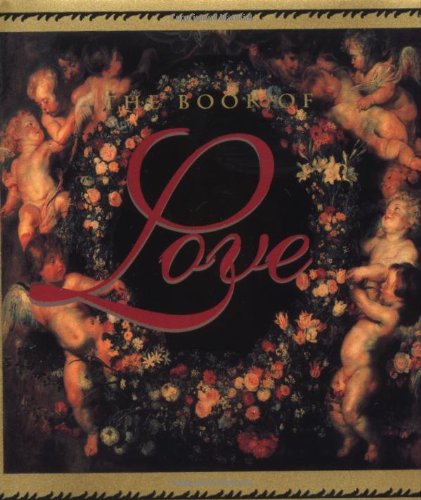

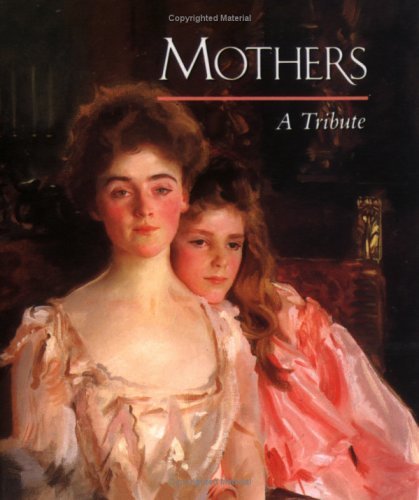
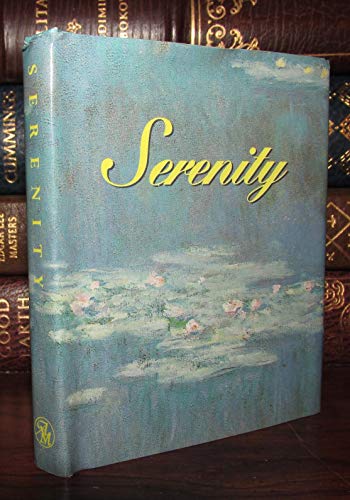

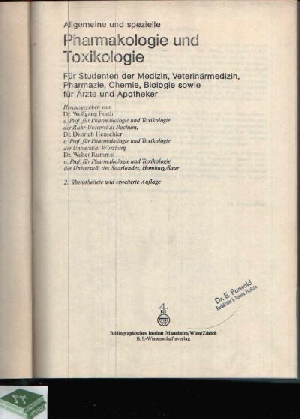



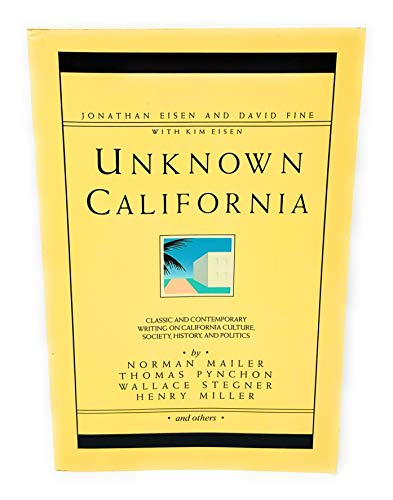


![Beispielbild für Die Hermetische Tradition. Von der alchemistischen Umwandlung der Metalle und des Menschen in Gold. Entschlüsselung einer verborgenen Symbolsprache Bibliotheca Hermetica [Hardcover] Julius Evola und die Alchimie Vorwort 1. Teil Die Symbole und die Lehre Einführung: Der Baum, die Schlange und die Titanen 1. Pluralität und Dualität der Kulturen 2. Die lebendige Natur 3. Das hermetische Wissen 4. Das « All-Eine» - der Drache Uroboros 5. Die hermetische «Gegenwärtigkeit» 6. Die Schöpfung und der Mythos 7. Das Weib, das «Wasser», der «Merkur», das «Gift» 8. Die Scheidung- «Sonne» und «Mond» 9. Gefrorene Wasser und fließende Wasser 10. Das «Salz» und das Kreuz 11. Die vier Elemente - der Schwefel 12. Seele, Geist und Körper 13. Die Vierheit im Menschen 14. Die Planeten 15. Die Lebenszentren 16. Die Siebenheit, die Operationen und der Spiegel 17. Das Gold in Der Kunst 18. Der Schatten, die Asche, die Überreste 19. Der philosophische Inzest 20. Das «Grab» und der «Durst» 21. Saturn, umgekehrte zum Verkauf von BUCHSERVICE / ANTIQUARIAT Lars Lutzer](https://pictures.abebooks.com/isbn/9783715701233-de-300.jpg)


